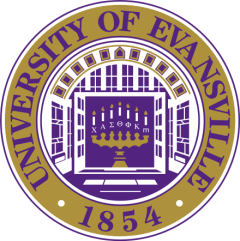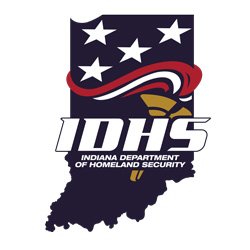|
The Indiana General Assembly is halfway through the 2022 legislative session, and the House of Representatives will now consider Senate bills while the Senate considers House bills. During this session, I joined my colleagues in supporting tax relief for Hoosiers, strengthening the nursing workforce pipeline and reducing jail overcrowding. |
|||||
|
Thanks to hardworking Hoosiers and years of fiscal responsibility, Indiana is facing $5 billion in reserves – that’s $3 billion more than expected. This unique situation makes it possible for lawmakers to pass the largest tax cut in our state’s history. House Bill 1002 would deliver direct relief to hardworking Hoosiers by reducing the individual income tax from 3.23 to 3%, eliminating a tax on Hoosiers’ utility bills called the Utility Receipts Tax, and lowering Indiana’s business personal property taxes.
Public safety is always a top priority of mine and to boost local efforts, I co-authored legislation to allow judges to send Level 6 felony offenders to the Indiana Department of Correction instead of county jails. The state often offers greater access to mental health and addiction treatment services than rural county jails. This bill could help reduce jail overcrowding and allow locals to direct resources to where they matter most. |
|||||
|
There’s a lot of work left to do in the second half of session and I look forward to taking our top priorities across the finish line. To follow these bills and others as they move through the process, visit iga.in.gov. |
|||||
High-Priority Bills Advance As Session Reaches Halfway Point
UE Receives $1.9 Million Nancy Shepard Estate Gift
Funds will generously support three areas of UE Music Conservatory
EVANSVILLE, IN (02/08/2022) The University of Evansville (UE) has received a $1.9 million gift from the Nancy Shepard Estate, with a designation to three separate areas within the UE Music Conservatory.
Nancy Shepard, who hailed from southern Illinois, attended Evansville College for elementary education. Halfway through college, she decided to change her major. In 1968, she graduated with a Bachelor of Music Education. After marrying her husband, Wesley, she earned a Master of Arts in 1971. She would spend the next three decades of her career as a band director for schools, instilling a love of music in thousands of students.
The gift will fund three areas: the Nancy L. Shepard Endowed Scholarship for Wind and Percussion Students, the O. Wesley Shepard Memorial Scholarship, and the Nancy L. and O. Wesley Shepard Endowed Guest Artist Series.
The Nancy L. Shepard Endowed Scholarship for Wind and Percussion Students will provide financial assistance for music education majors who wish to pursue a career as a band director. The O. Wesley Shepard Memorial Scholarship was established by his friends and former students upon his retirement in 1972. The scholarship supports students who are clarinet or music education majors and are part of the University band.
As husband and wife, Nancy and Wesley were deeply involved in music and saw its purpose in expanding the minds and talents of students. They believed guest artists could have a positive impact on college music programs. The Nancy L. and O. Wesley Shepard Endowed Guest Artist Series will be utilized annually to welcome guest artists of significant stature to UE. The artist will work with students in the classroom or through master classes, and they will hold a music performance available for the enjoyment of the local community.
“Our Music Conservatory is tremendously grateful for the generosity of Nancy Shepard and her passion for music that will benefit our students for years to come,” said Ken Steinsultz, co-director of the UE Music Conservatory and director of bands. “We are equipping music educators of the future who will carry on Nancy’s legacy and help generations of students, just as she did in her own career.”
The UE Music Conservatory is a community of students and artist-teachers working together to achieve artistic excellence and professional results. Curriculum combined with active learning gives students the extensive experience needed for any degree offered, including music education, music therapy, and more. The Community Conservatory provides creative outlets for locals, including private lessons, the Suzuki method, summer camps, community ensembles, and classes. Become a member today at evansville.edu/community-conservatory.
Indiana State Police Seeks Recruits For Motor Carrier Inspectors
The Indiana State Police is now accepting applications for Motor Carrier Inspectors (MCI). Â The MCI positions will staff permanent scale facilities in Lowell, West Harrison, Terre Haute, Richmond, and Seymour. Â Inspectors enforce both state and federal regulations pertaining to commercial motor vehicles operating within the State of Indiana.
Trainees must complete the Motor Carrier Inspector School scheduled to begin on July 11, 2022 and conclude on September 16, 2022. Â The training will be conducted Monday through Friday at the Commercial Vehicle Enforcement Division in Indianapolis, IN. Â Housing will be provided. Â During the training, trainees will develop skills including emergency vehicle operations, defensive tactics, communications, hazardous materials, first-aid, post-crash investigations, and truck inspections.
To participate in the selection process, applicants for the position of Motor Carrier Inspector must meet the following basic requirements:
- Be a United States citizen.
- Be at least 21 years old by September 16, 2022.
- Possess a high school diploma or G.E.D.
- Possess a valid driver’s license.
- Be required to pass a physical agility test, oral interview, polygraph exam, and a background investigation.
- Be required to complete a medical exam, a psychological exam, and a drug test.
- Geographical proximity to the scale facility may be a factor in the selection process.
Trainees are paid during the MCI school and are provided with all necessary equipment. Â The starting salary is $34,987 and will increase to $36,031 at the end of the first year of employment and to $39,114 at the end of the second year of employment. Â Over the next ten years with step increases in pay, a Motor Carrier Inspector may reach an annual salary of $52,812. Â A retirement program will be available through PERF.
To apply for a Motor Carrier Inspector position, visit the Indiana State Police website at https://www.governmentjobs.com/careers/indianasp. Applications for Motor Carrier Inspector must be submitted by 11:59 PM (Indianapolis time), Thursday, April 21, 2022.
The Indiana State Police is an Equal Opportunity/Affirmative Action Employer complying with all provisions of the Americans with Disabilities Act.
Interested applicants can obtain additional information about a career as a Motor Carrier Inspector by visiting https://www.in.gov/isp/career-opportunities/motor-carrier-inspectors/.
Apply Now: New Indiana Body Camera Grant Program
Applications are now being accepted for the new Indiana Local Body Camera Grant (ILBC) managed by the Indiana Department of Homeland Security.
The ILBC program provides matching grants to city, town and county law enforcement agencies to support the purchase of body-worn cameras. The matching grant funds may be used only for the purchase of body-worn cameras and may not be used to purchase video storage equipment or services. Only one ILBC grant application will be allowed from each law enforcement agency.
The ILBC program targets two priority funding areas:
- Law enforcement agencies that have not previously purchased body-worn cameras will be eligible for up to $800 per full-time officer, and;
- Law enforcement agencies purchasing body-worn cameras to supplement an existing body-worn camera program will be eligible for up to $400 per full-time officer.
The application period is now open. All applications must be submitted by 5 p.m. ET on Feb. 18, 2022.
All applicants must be registered with the IntelliGrants system before applying. Visit the IDHS Grants Management page for complete information and instructions on registering with IntelliGrants.
Law enforcement agencies are encouraged to review the Notice of Funding Opportunity before applying. For complete details on the program, including eligibility and matching requirements, please review:
Notice of Funding Opportunity for the Indiana Local Body Camera Grant Program
Ivy Tech Offers Info Session Regarding How To Complete Degree in 11 Months
Evansville, IN – Ivy Tech Community College Evansville will host an information night designed to tell interested individuals more about completing an associate degree in under one year, through the Associate Accelerated Program.
The event, ASAP Info Night, is planned for Wednesday, Feb. 16, from 6-7 p.m. at CenterPoint Auditorium (Room 147) on the main campus, 3501 N. First Avenue, Evansville.
ASAP classes are held in small, closely-knit groups known as ‘cohorts.’ Classmates will remain with their cohort throughout the program and work together often. The coordinator of ASAP helps students identify clear academic goals, then maps out a path they can follow. Faculty team teach students and offer individualized attention.
Those attending ASAP Info Night will learn about the benefits of the program, including how they will maximize their tuition dollars by finishing in less than a year, and transferring to a four-year college of their choice. Student support and financial aid will be discussed, as well as Ivy+ — Ivy Tech’s flat tuition rate for 12 credit hours and more, with no textbook fees.
A special current student panel will also be on hand to answer real-time questions.
To RSVP go to https://link.ivytech.edu/ASAPinfo
USI Softball opens 2022 season Friday in Alabama
EVANSVILLE, Ind.—University of Southern Indiana Softball begins the 2022 season this weekend when it competes in the University of Alabama Huntsville Charger Chillout at Sand Mountain Park in Albertville, Alabama.
The Screaming Eagles begin the six-game, three-day weekend Friday at noon when they take on Delta State University. USI plays Carson-Newman University Friday at 2:30 p.m. before taking on No. 22 Alabama-Huntsville Saturday at 1 p.m.
USI closes the opening weekend with games against Christian Brothers University Saturday at 3:30 p.m., Mississippi College Sunday at 10 a.m. and Shorter University Sunday at 12:30 p.m.










